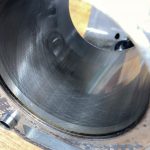Surface texture refers to the characteristics of a material’s outermost layer that can be observed and felt when touched or examined closely. It encompasses several key aspects, including surface roughness, waviness, and lay. Understanding and controlling surface texture is crucial for ensuring the desired performance, aesthetics, and functionality of products in fields ranging from manufacturing to design and engineering.


